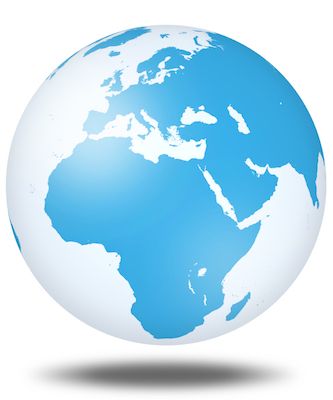- Politics
- Diversity, equity and inclusion
- Financial Decision Making
- Telehealth
- Patient Experience
- Leadership
- Point of Care Tools
- Product Solutions
- Management
- Technology
- Healthcare Transformation
- Data + Technology
- Safer Hospitals
- Business
- Providers in Practice
- Mergers and Acquisitions
- AI & Data Analytics
- Cybersecurity
- Interoperability & EHRs
- Medical Devices
- Pop Health Tech
- Precision Medicine
- Virtual Care
- Health equity
Why mHealth Is a Work in Progress
No other piece of technology has penetrated markets like the cellphone, but there are still barriers to its widespread medical use.

In a world of vast wealth inequality, no other piece of technology has penetrated markets like the cellphone. Commercial wireless signals reach 85% of human beings, and even in low- and middle-income countries more than half the population owns a mobile device.
Despite these numbers, Amira Roess, PhD, argues that the use of mobile health (mHealth) interventions often lags behind in the developing world.
In a commentary she wrote for the New England Journal of Medicine, the George Washington University assistant professor of global health outlines the many uses and potential of mHealth.
Most often, the devices collect health-related data for electronic health records or registries in remote and low-resource areas. “There is compelling evidence that these tools offer a time- and cost-effective method for collecting and delivering crucial health data, and their use is expected to continue to grow,” she writes.
The second most common use is the distribution of health education messaging, typically via 1-way SMS texting. Such communications often aim to influence behavioral change, but the author argues that the practice remains unproven.
Two-way communication is another wide-reaching and valuable use of mHealth. For physicians and community health workers in remote areas, mobile technologies create opportunities to update supervisors and receive feedback, which would otherwise be impossible. Roess cites a program in the East African nation of Malawi that used mHealth to double patient capacity while saving thousands of hours and travel dollars.
The last application that she mentions is more exclusive to high-income countries. Linking mobile devices to external machines—like blood glucose or blood pressure monitors—allows researchers and providers to use their sensory and diagnostic capabilities.
So far, Roess writes, few of these interventions have made it to low- and middle-income countries. But that could be changing. Rapid tests to diagnose HIV and other infections are in development, and costs should go down as technology improves.
Although many people own a mobile device, they can’t always use it. Disruptions in electrical grids and coverage networks are common in less affluent nations. “Many apps are theoretically available, but in practice the infrastructure is simply not there,” Roess writes.
The disparity, she says, stems from a lack of research. She calls upon engineers, healthcare professionals, and scientists to work with economists and telecommunication experts to enable mHealth’s validation and growth. The field is an essential part of healthcare’s future, but implementation and evaluation must be demanded, “lest we arrive in an increasingly fragmented mHealth landscape littered with poor-quality, unproven apps,” Roess concludes.
Podcast: Adoption of Healthcare Tech in the Age of COVID-19 with Dr Kaveh Safavi
June 22nd 2021Kaveh Safavi, MD, JD, global health lead of Accenture Health, discusses how the pandemic influenced the speed at which healthcare organizations adopted new technologies and how this adoption is impacting patient care.
